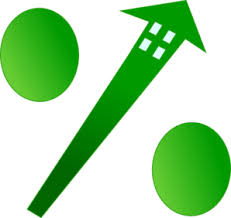First-time U.S. home buyers oldest on record, least diverse since 1997
About 88% of all home buyers were white/Caucasian, 6 percentage points more than in 2021.
About 88% of all home buyers were white/Caucasian, 6 percentage points more than in 2021.

Sticker shock in youth sports is nothing new, but the onslaught of double-digit inflation across America this year has added a costly wrinkle on the path to the ballparks, swimming pools and dance studios across America.

The Federal Reserve on Wednesday raised its key short-term interest rate to a range of 3.75% to 4%, its highest level in 15 years.

Looming over the Federal Reserve meeting that ends Wednesday is a question of intense interest: Just how high will the Fed’s inflation-fighters raise interest rates—and might they slow their rate hikes as soon as next month?

U.S. job openings rose unexpectedly in September, suggesting that the American labor market is not cooling as fast as the inflation fighters at the Federal Reserve hoped.

Federal Reserve officials will maintain their resolutely hawkish stance next week, laying the groundwork for interest rates reaching 5% by March 2023, moves that seem likely to lead to a U.S. and global recession, economists surveyed by Bloomberg said.
A measure of inflation that is closely monitored by the Federal Reserve remained painfully high last month, the latest sign that prices for most goods and services in the United States are still rising steadily.

Many potential homebuyers have moved to the sidelines as mortgage rates have more than doubled this year. Sales of existing homes have declined for eight straight months.
Most economists expect Americans to keep spending at a relatively lackluster pace through the end of the year. Overall uncertainty about consumer spending is weighing on a range of companies.
The National Association of Realtors said Thursday that sales of previously occupied U.S. homes fell in September for the eighth month in a row.
Overall shelter costs in the United States saw their biggest year-over-year increase since 1982.
The report stresses how high inflation has broadened across the economy, eroding Americans’ paychecks and forcing many to rely on savings and credit cards to keep up.
The cost-of living adjustment—the largest in more than 40 years—means the average recipient will receive more than $140 extra a month beginning in January, the Social Security Administration said Thursday.
Prices paid to U.S. producers rose in September by more than expected, suggesting inflationary pressures will take time to moderate and keeping the Federal Reserve on its aggressive interest rate-hike path.
The surging cost of veterinary services illustrates how high inflation has spread well beyond physical goods, such as cars, that became scarce as the economy accelerated out of the pandemic recession, to numerous services.
America’s employers slowed their hiring in September but still added a solid number of jobs, likely keeping the Federal Reserve on pace to keep raising interest rates aggressively to fight persistently high inflation.
Comments by Federal Reserve Governor Lisa Cook, Neel Kashkari and Raphael Bostic suggest the Federal Reserve is unlikely to slow its campaign against inflation anytime soon.
U.S. job openings plummeted in August, likely a welcome sign for Federal Reserve officials as they seek to cool demand for workers without triggering a spike in unemployment.
The figures suggest that the economy is showing some resilience despite sharply rising interest rates, violent swings in the stock market, and high inflation.
The Federal Reserve delivered its bluntest reckoning Wednesday of what it will take to finally tame painfully high inflation: Slower growth, higher unemployment and potentially a recession.